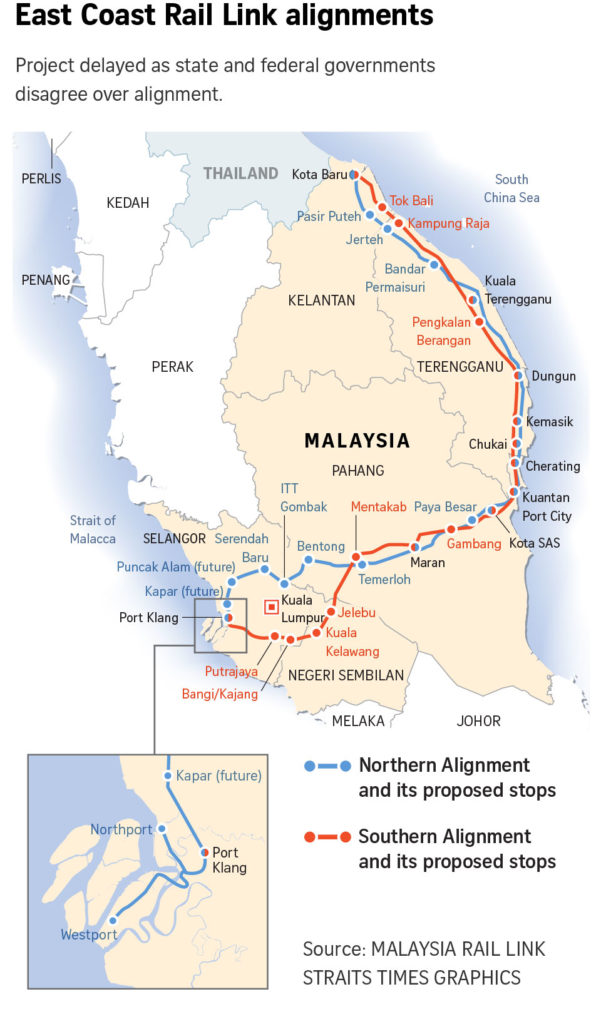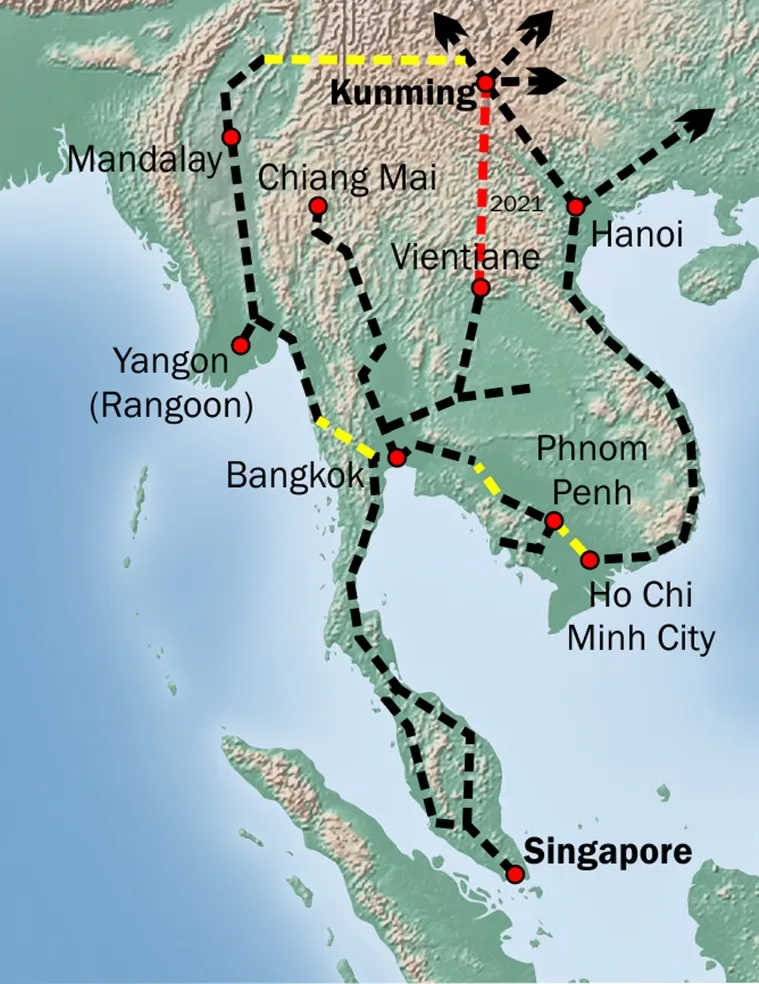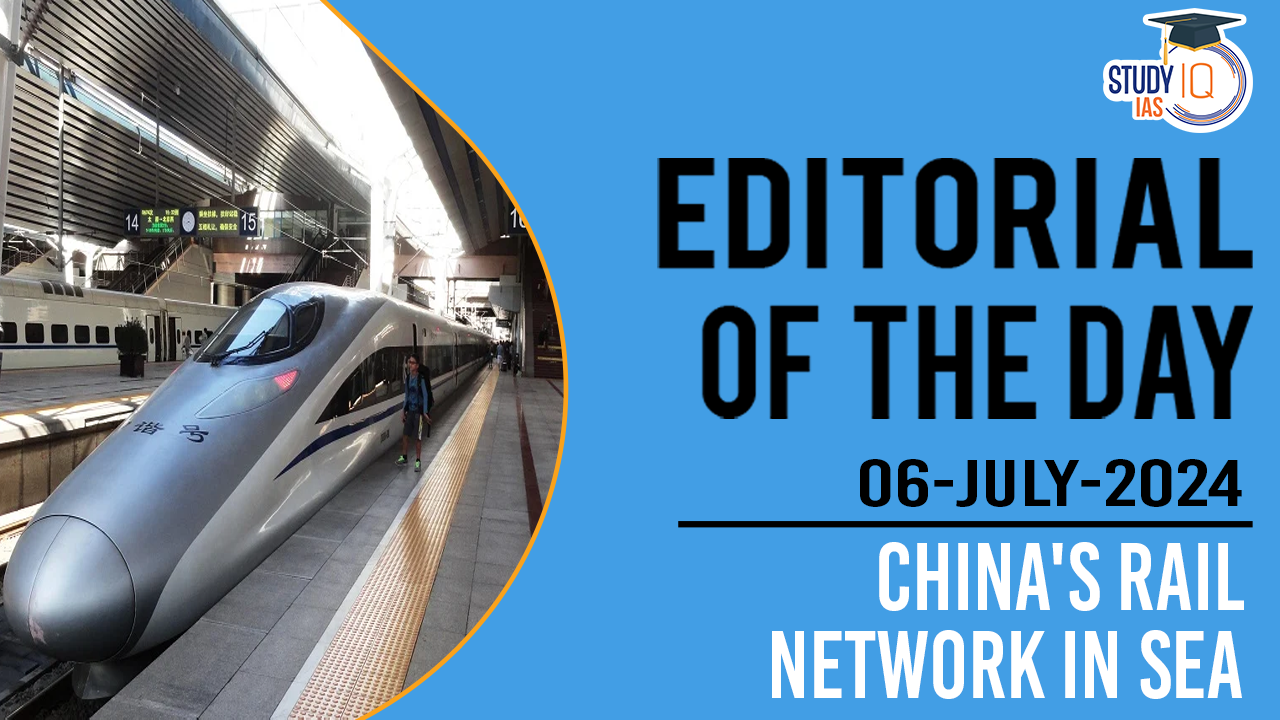Table of Contents
Context: China is interested in developing a railway network that links Malaysia, Laos, and Thailand to boost regional connectivity as part of the Belt and Road Initiative (BRI).
East Coast Rail Link (ECRL) Project
- The ECRL is a 665-km railway that will connect Kota Bharu on Malaysia’s northeastern coast with Port Klang on the west coast, near the strategically important Strait of Malacca.
- As the largest economic and trade cooperation project between China and Malaysia, it aims to enhance connectivity, facilitate the movement of freight, and boost tourism.

- Initiated in 2017, the project faced multiple setbacks, including funding issues and political controversies, particularly involving former Malaysian Prime Minister Najib Razak, who was implicated in embezzlement scandals.
- After being stalled, the project resumed in 2020 with a renegotiated deal at a lower cost, reflecting Malaysia’s cautious approach to managing its financial commitments with China.
Pan-Asian Railway Network
- This ambitious network aims to connect Kunming in southern China with Singapore, passing through several Southeast Asian countries via multiple routes:
- Western line through Myanmar and Thailand
- Central line through Laos and Thailand
- Eastern line through Vietnam, Cambodia, and Thailand

- Current Status: Only the section linking Laos with China is operational, which began service in 2021. Other segments, like the one in Thailand, face delays due to high costs and governmental caution regarding financial dependencies on China.
- Challenges: Variations in railway track widths among the countries pose logistical challenges, and the economic viability of the rail network is under scrutiny. Many experts believe that air travel and maritime shipping might still be more efficient and cost-effective for both passengers and cargo.
China’s Regional and Geopolitical Aspirations
- The idea for a pan-Asian railway dates back to before Xi Jinping’s presidency, highlighted during the 10th ASEAN summit in 2007.
- Through the BRI, China aims to cement its role as a major infrastructure provider in the region, despite concerns over the terms of financing and fears of debt trap diplomacy.
- In 2023, trade between China and ASEAN amounted to USD 911.7 billion, with each becoming the other’s largest trading partner for four consecutive years. China uses such economic ties to foster goodwill amidst its territorial assertiveness in the South China Sea.


 GPS Spoofing and Its Impact in India: A ...
GPS Spoofing and Its Impact in India: A ...
 Amrit Gyaan Kosh Portal: A Comprehensive...
Amrit Gyaan Kosh Portal: A Comprehensive...
 UpLink Initiative: Launched by World Eco...
UpLink Initiative: Launched by World Eco...





















